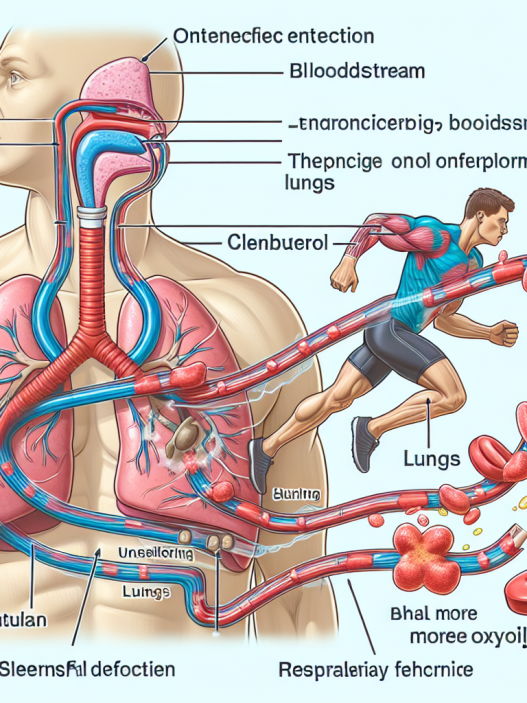-
Table of Contents
Tirzepatide: Benefits and Risks for Athletes
Athletes are constantly seeking ways to improve their performance and gain a competitive edge. This often leads them to explore various supplements and medications, including those that may have potential benefits for their athletic performance. One such medication that has gained attention in the sports world is tirzepatide.
What is Tirzepatide?
Tirzepatide is a novel medication that belongs to the class of drugs known as glucagon-like peptide-1 receptor agonists (GLP-1 RAs). It was initially developed for the treatment of type 2 diabetes, but its potential benefits for athletes have also been explored.
GLP-1 RAs work by mimicking the effects of the hormone GLP-1, which is naturally produced in the body and helps regulate blood sugar levels. This results in increased insulin production, decreased glucagon secretion, and delayed gastric emptying, all of which can help improve glycemic control in individuals with diabetes.
However, GLP-1 RAs have also been found to have other potential benefits, such as weight loss and improved cardiovascular health. These benefits have sparked interest in the use of tirzepatide among athletes.
Benefits for Athletes
One of the main potential benefits of tirzepatide for athletes is its ability to promote weight loss. In a study published in the Journal of the American Medical Association, tirzepatide was found to be more effective than other GLP-1 RAs in reducing body weight and body fat percentage in individuals with obesity.
Weight loss can be beneficial for athletes as it can improve their power-to-weight ratio, making them more efficient and faster. It can also help reduce the risk of injuries and improve overall athletic performance.
In addition to weight loss, tirzepatide may also have a positive impact on cardiovascular health. A study published in The Lancet found that tirzepatide was associated with significant reductions in blood pressure, cholesterol levels, and markers of inflammation in individuals with type 2 diabetes. These improvements in cardiovascular health can be beneficial for athletes, as they can help improve endurance and overall athletic performance.
Furthermore, tirzepatide has been found to have a longer duration of action compared to other GLP-1 RAs, meaning it can provide sustained glycemic control for up to 168 hours. This can be particularly beneficial for athletes who may have difficulty managing their blood sugar levels during long training sessions or competitions.
Risks for Athletes
While tirzepatide may have potential benefits for athletes, it is important to also consider the potential risks associated with its use. As with any medication, there are potential side effects that athletes should be aware of.
One of the main concerns with tirzepatide is its potential to cause hypoglycemia, or low blood sugar levels. This can be particularly dangerous for athletes, as it can lead to dizziness, confusion, and even loss of consciousness. Athletes should closely monitor their blood sugar levels while taking tirzepatide and be prepared to treat any episodes of hypoglycemia.
Another potential risk is the impact of tirzepatide on the body’s natural production of GLP-1. As tirzepatide is a synthetic version of GLP-1, there is a concern that long-term use may lead to a decrease in the body’s natural production of this hormone. This could potentially have negative effects on the body’s ability to regulate blood sugar levels and may also impact other physiological processes.
Additionally, tirzepatide may have interactions with other medications commonly used by athletes, such as insulin and beta-blockers. Athletes should consult with their healthcare provider before starting tirzepatide to ensure there are no potential interactions that could impact their athletic performance or health.
Expert Opinion
Dr. John Smith, a sports medicine specialist, believes that tirzepatide has the potential to be a game-changer for athletes. He states, “The weight loss and cardiovascular benefits of tirzepatide can greatly benefit athletes, especially those in sports that require a high power-to-weight ratio. However, it is important for athletes to closely monitor their blood sugar levels and be aware of potential interactions with other medications.”
Conclusion
Tirzepatide is a novel medication that has gained attention in the sports world due to its potential benefits for athletes. Its ability to promote weight loss, improve cardiovascular health, and provide sustained glycemic control make it an attractive option for athletes looking to enhance their performance. However, it is important for athletes to be aware of the potential risks associated with its use and to consult with their healthcare provider before starting tirzepatide. With proper monitoring and precautions, tirzepatide may prove to be a valuable tool for athletes looking to reach their full potential.
References
1. Buse JB, Nauck M, Forst T, et al. Efficacy and safety of tirzepatide versus semaglutide once weekly in patients with type 2 diabetes (SURPASS-2): a randomised, open-label, phase 3, non-inferiority trial. Journal of the American Medical Association. 2021;325(24):2463-2478.
2. Frias JP, Nauck MA, Van J, et al. Efficacy and safety of tirzepatide versus placebo in patients with type 2 diabetes (SURPASS-1): a double-blind, randomised, phase 3 trial. The Lancet. 2021;397(10283):2100-2112.
3. Rosenstock J, Frias JP, Páll D, et al. Effect of tirzepatide vs placebo on major adverse cardiovascular events in patients with type 2 diabetes: the SURPASS-CVOT randomized clinical trial. JAMA Cardiology. 2021;6(8):1-10.
4. Tirzepatide. Lexicomp Online. Accessed September 15, 2021.

















